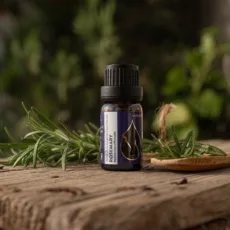Yarrow

Common yarrow (Achillea millefolium) is a perennial herb with white flowers and a strong, characteristic, slightly sweet aroma. It is also known as “thousand-leaf,” regarded by local healers as a herb with supernatural powers.
The name “Achillea” comes from the Thessalian hero Achilles—the bravest of all the Greeks who fought in the Trojan War. According to legend, Achilles and the ancient warriors used yarrow externally to dress cut wounds, to stop internal and external bleeding, to increase blood clotting, and to soothe pain. “Millefolium” means “a thousand leaves,” referring to the plant’s small, fine, feathery foliage.
The ancient Europeans called the herb “soldier’s herb” and likewise prepared a healing ointment for wounds received on the battlefield. In England some old names for this plant also speak to its wound-healing ability—“herb for the soldier’s wound” and “knight’s milfoil.”
In Chinese medicine, yarrow is regarded as the perfect balance between Yin and Yang. Legends from antiquity say the herb was also used to make love charms.
Yarrow is one of the wonders of folk medicine. In old herbals it was called “deliverance from all woes” because of the belief in its magical ability to help where there was no hope of healing. In folk tradition, a wreath woven from flowering stalks was placed on the head of those suffering from fever. The sick were then immersed completely in a river. According to belief, just as the water carried away the wreath, so it would carry away the illness.
To this day, yarrow is one of the most popular plants in folk medicine for treating so-called “women’s ailments,” such as uterine bleeding, painful menstruation, leukorrhea, and uterine fibroids. It is also a very popular herb as a hemostatic and anti-inflammatory remedy—internally (for gastric and hemorrhoidal bleeding) and externally (for wounds, nosebleeds, and bleeding gums)—and as a soothing agent for stomach pains, ulcers, and gastritis.








